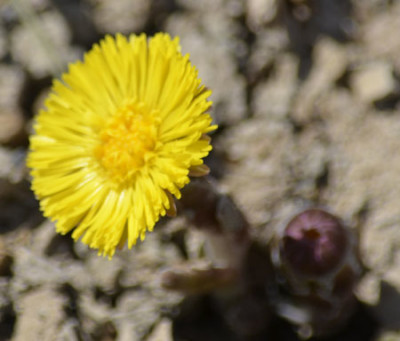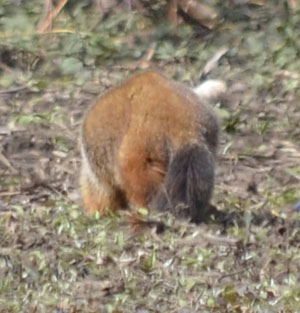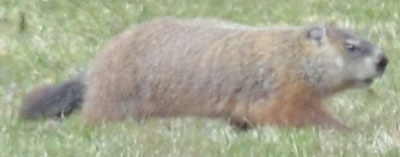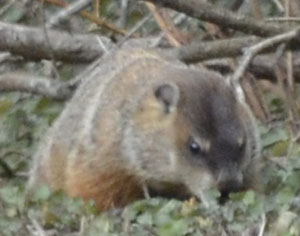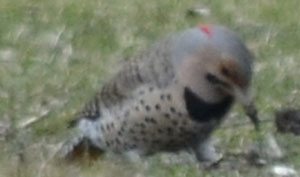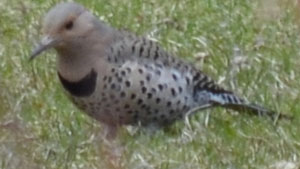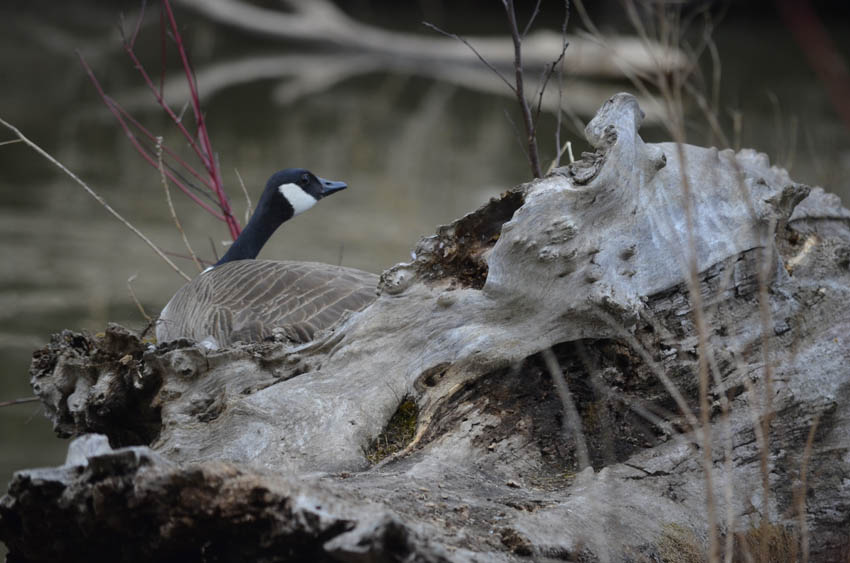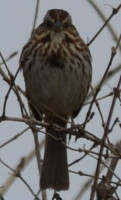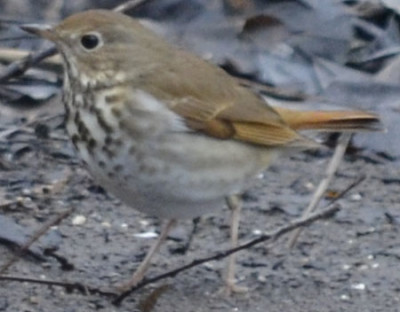I mentioned in my last post that the Brown Creepers, Yellow Rumped Warblers, and both Ruby Crowned and Golden Crowned Kinglets were migrating through Arkendo Park in Oakville despite the relatively cool start to spring. As I kept searching I found some other spring beauties, too.
Nope They’re Not Dandelions
What a difference a week makes. At the beginning of April there was no sign of any Coltsfoot. By mid-April, the swallow-nesting sandbanks along the shore were dotted with bright yellow blooms. Coltsfoot is an alien but is well established in Canada. I don’t know if its pollen provides welcome food for spring insects like dandelion blossoms do, but I suspect it might. I decided to check.
According to a paper by J-D M Wild and G. Gottsberger who studied Coltsfoot in Bavaria , insects are attracted to Coltsfoot by a sweet scent and the yellow colour (plus ultraviolet patterns) of the ray and disc florets. As well as the pollen itself, the male disc florets offer the insects “hexose-rich nectar.”
So it sounds like Coltsfoot might be useful to early spring insects, although Dandelions, another alien species, reputedly offer a high protein food source which may be more welcome.
Arkendo, by the way, is almost entirely over-run by alien invasives. Aside from the Poison Ivy and Sumac, there don’t seem to be many native plants growing in the park near the Lake.
Four Legged Spring Sights
Passing the Coltsfoot, I tried to walk carefully around part where the creek meets the Lake. Often the duck pond hosts something unusual.
Well, I wasn’t quiet or slow enough: a startled Belted Kingfisher hurled abuse at me and a warning to all as it took off from an extremely short deadhead near the far side of the creek. I admit, I was expecting any kingfishers to be on one of their preferred perches much higher up in the trees. Still, it was my own fault that I missed yet another chance to get a good close-up of a Kingfisher.
I kept scanning the far bank of the creek for any signs of Mink or Muskrat, both of which I’ve seen here. Then I started looking at the lawns of the huge house that faces the duck pond.
I said it was fox red, didn’t I?
Happily, there I saw, feeding, an extremely robust Groundhog. The copper orange of its fur and the black of its hind legs and tail made it vivid against the very short grass. By slowing down significantly I was able to watch it for quite a while, although it was too far away for a clear photo.
I never realized how angry a Groundhog can look.
I think they look more like bears than hogs.
While taking one of my typically out-of-focus photos, though, I noticed a brown lump on the lawn in front of it. Ah! Another spring migrant—a Yellow Shafted Flicker.
Note the Moustache.
No sooner had I noticed the one, when two other Flickers flew up from the lawn into a birch tree.
While again, I couldn’t get a good photo because of the distance, I took a few record shots to remind me of what I’d seen. I took a few before passing the Canada Geese, and a few afterwards. It wasn’t till I was reviewing them on the computer at home that I realized they weren’t of the same Flicker. The first had the assertive black moustache of the male; the second, like most females, had no moustache of any colour. Sneaky birds!
Unless it shaved, this is a Female. Note: No moustache.
Canada Geese Pick a Terrible Spot to Set Up House
There’s a fairly small drift wood log on the shore at the Arkendo Park side of the duck pond. Anyone walking from the Lake back towards the pond or creek passes this log. So can you guess where a pair of rather small Canada Geese has decided to try to nest?
Frankly, I don’t think much of their chance of success. While I politely walked decisively past the nest and didn’t stop again till about 8 yards away, I could tell from the hysterical calling a half-hour later that other park visitors were not interested in being so considerate.
Still, it was nice to see the Mom sitting on the log and arching her neck to keep a close eye on me. I don’t know if they’ve actually laid any eggs because I didn’t disturb her enough to flush her off the log. I try to minimize my interference in animals’ lives when I can.
Another Exotic Shorebird Turns Out to Be Something Quite Common
I seem to specialize in mistaking Song Sparrows, which were singing around the duck pond, for exotic birds whenever I see them in slightly unexpected places. I’ve mistaken them for Wrens, American Tree Sparrows, and even Horned Larks. Not for long, of course, just for long enough to take a dozen bad photos of a bird which I have several good clear photos of already.
Is it just me or is this Song Sparrow glaring at me?
So I was fairly confident that the small bird I started taking shots of that was foraging along the leaf-strewn mud flat on the far side of the Duck Pond would turn out to be another Song Sparrow. I’d actually seen and photographed one singing a few minutes before.
When I finally got a good glimpse through the viewfinder and realized the streaking on the front was wrong for a Song Sparrow, I got more excited. Could this be a Waterthrush?
Everyone else sees cool things like Waterthrushes on migration. I imagined smugly mentioning my sighting on OutdoorOntario to the wistful sighs of other bird watchers.
Of course, it wasn’t a Waterthrush. It wasn’t even uncommon. A few more photos and it finally (perhaps having learned from the Ruby Crowned Kinglet that this Birder is a moron) turned and flaunted its rusty tail at me.
Yep, it was a Hermit Thrush.
In my defence, they both have the word “thrush” in their name! And the bird guides never describe Hermit Thrushes as being interested in foraging along mud flats.
And, frankly, it was lovely to see the Hermit Thrush. He or she was cheerfully searching for food and offered an engaging glimpse into its unworried behaviour. Plus of course I got to practice my photography skills some more before the flood of warblers washes over us later in the spring. (I didn’t say I improved! Just that I practiced.)
It may be worth mentioning that it was heavily overcast during this spring expedition. For brief glorious seconds, the sun would try to fight through, but it was gradually losing the battle.
Home Again
This low light level isn’t great with a relatively inexpensive telephoto lens.
And since it was getting darker (and colder! The wind off the Lake was chilling.) I decided to leave these lovely Warblers and Kinglets and Sparrows and Thrushes and wander back towards my own backyard. It had been a colourful warming glimpse of spring despite the overcast cool weather.
Related Reading
- Spring Migrants Surge along Lake Shore at Arkendo Park, Oakville Ontario
- Brown Creepers, Kinglets and Yellow Rumped Warblers Flutter Through Arkendo Park
Join In
Do Canada Geese nest in your neighbourhood? Do you question their intelligence in picking nesting sites? Please share your astute observations with a comment.

